Inquiry Approach to Learning
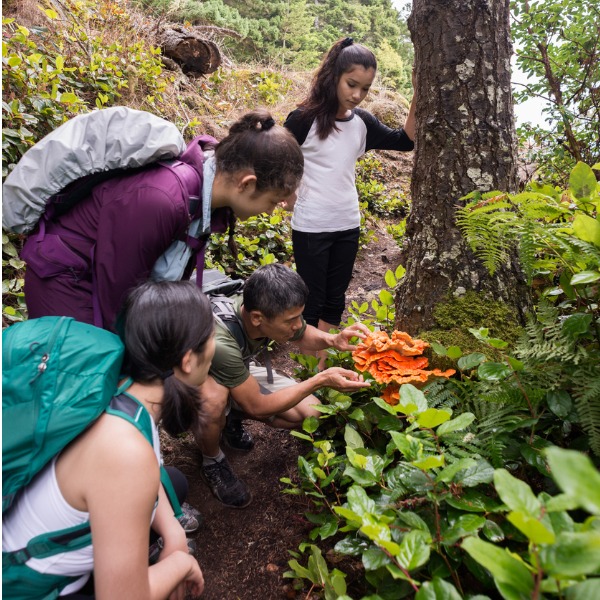
People observing a mushroom (PamelaJoeMcFarlane, iStockphoto)
Inquiry is an approach to learning that engages our natural curiosity and desire to make sense of the world.
Humans have an innate urge to explore. We are naturally curious and wonder how the world in which we live works. When we come upon something that amazes us, puzzles us or causes us to question what we believe to be true, our wondering nature provokes us to explore and investigate in search of answers.
Inquiry is an approach to learning that engages our natural curiosity and desire to make sense of the world. It encourages the asking of questions and the seeking of answers to those questions through investigation and exploration. Sometimes those questions come spontaneously to our own minds, and sometimes those questions come from the provocation of others, such as educators.
Inquiry is often portrayed as a linear process (think “the scientific method”) with a specific, prescribed set of steps. In reality, just as there is no single scientific method, Inquiry is not a linear progression. Often it is more of an iterative or cyclical series of events influenced by observations and discoveries.
There are, however, some actions and skills that regularly occur during inquiries. These include, but are not limited to: asking questions; predicting; collaborating and communicating with others; observing; sorting and classifying; comparing and contrasting; planning; recording; analyzing and interpreting; reflecting; and making connections.
The stages that make up the Inquiry process are outlined in the diagram below. NOTE: Since this is not a linear process, there are no arrows showing the progression of stages. Typically, an Inquiry starts with a question (top centre). However, at each stage new questions may become evident. These new questions may suggest a new line of inquiry and require going back to an earlier stage. As with scientific investigation, questions are the driving force behind all inquiry.
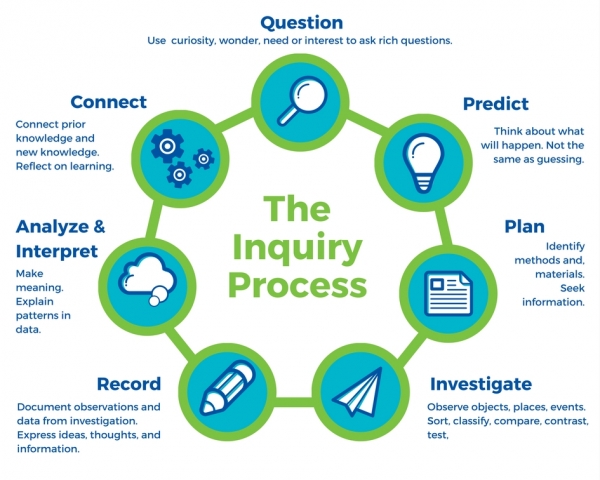
Question


Inquiry is driven by curiosity, wonder, interest and/or a need to answer a question. Being able to ask rich questions enables students to construct their knowledge and develop an understanding of concepts and experiences.
It is important that educators create a classroom environment that supports and encourages students’ questions. This means creating an environment that provides opportunities for students to engage with others and to ask and respond to authentic, meaningful questions.
Students develop the ability to ask different kinds of questions for different purposes when they observe questioning modeled by educators. Educators are encouraged to help students to ask many different types of questions, including questions that inspire scientific inquiries.
Predict

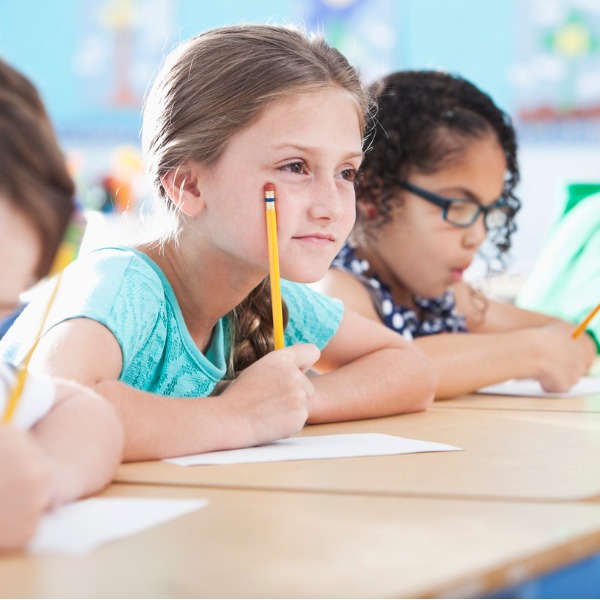
Predicting is an important part of any Inquiry. Predictions are not guesses, but rather are forecasts of what one thinks might happen based on observations and prior knowledge. The ability to make logical predictions supports the development of the ability to formulate hypotheses.
The ability to make good predictions relies on skills such as observing (using the senses to collect information), sorting and classifying (grouping objects or events according to their similarities or predetermined groups), and inferring (making assumptions based on prior knowledge).
As with questioning, students develop the ability to make reliable predictions in a classroom environment that accepts and respects students’ predictions and refrains from judging, rewarding, acclaiming or condemning predictions and that encourages students to think for themselves and to make predictions based on their unique experiences, thoughts and ideas.
Students develop the ability to make reliable predictions when this skill is modelled by educators. Students also learn what a reliable prediction sounds like when opportunities are provided for them to share their predictions and the reasoning behind them as part of the Inquiry process.
Plan

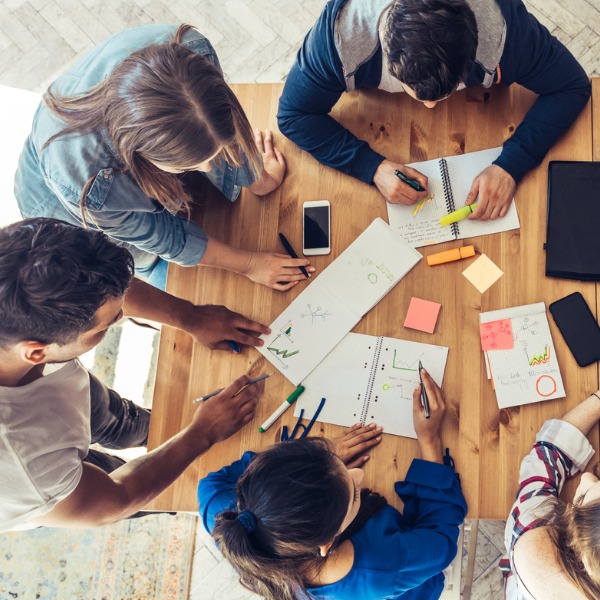
Once students have identified questions to explore and have made predictions about the outcome of their explorations, they need to design ways to test their predictions.
When developing a plan for an Inquiry, students should ask themselves what they need to do to find answers to their questions. This involves applying organization skills to identify the methods, tools, materials and sequence of steps to follow. Another element of planning involves thinking about where/how to get the information (data) needed and the most appropriate way(s) to record their data.
Educators can model the planning process by having students brainstorm the steps that could be taken to conduct a sample Inquiry and then collaboratively plan the order in which the tasks should logically occur.
Investigate

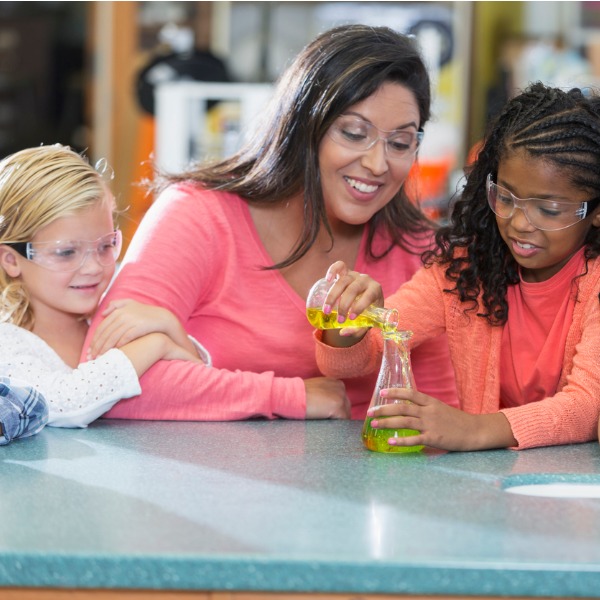
The Investigation stage of the Inquiry process is the stage at which predictions are tested and information and data are gathered.
Scientists (and other professionals) often test their predictions by conducting experiments. The purpose of an experiment is to see if observations made about a given phenomenon agree or conflict with the predictions made. When investigating, students may conduct what is known as a fair test or controlled experiment in which one variable is changed while all other variables are kept constant. Educators may wish to model fair testing for students who may not have been introduced to this type of investigation.
When investigating, students develop and apply a number of skills such as observing, sorting and classifying, comparing and contrasting, working collaboratively and working safely as they explore objects, materials and/or events. Investigating may give rise to more questions and wonderings to be considered.
It is important that educators stress with students the need to observe only what they actually see/hear/smell etc., and not make assumptions or inferences at this point in the Inquiry process. “Just the facts” is a good motto to follow during the investigation stage.
Record

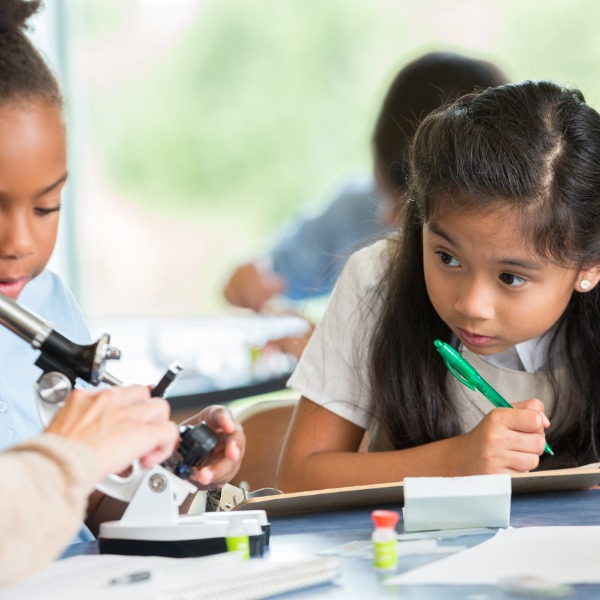
As part of the Inquiry process, students consider appropriate ways in which to record the data that they will be collecting. The preservation of data for later use is an important part of the Inquiry process.
When planning for documenting and organizing data, students must consider the kinds of data they will be gathering (e.g., qualitative, quantitative) and how best to document and organize the data so that it will be useful for analysis and interpretation. The process of documenting and organizing data promotes the development of a wide range of written, oral, visual and digital communication skills such as sketching, labelling, note-taking, journaling, photographing, videotaping, etc.
Educators should encourage students to obtain as much information as possible when they record observations and data gathered through inquiries (e.g., include units of measurement with quantitative data, label apparatus, and take photographs with date and time stamps).
Analyze and Interpret

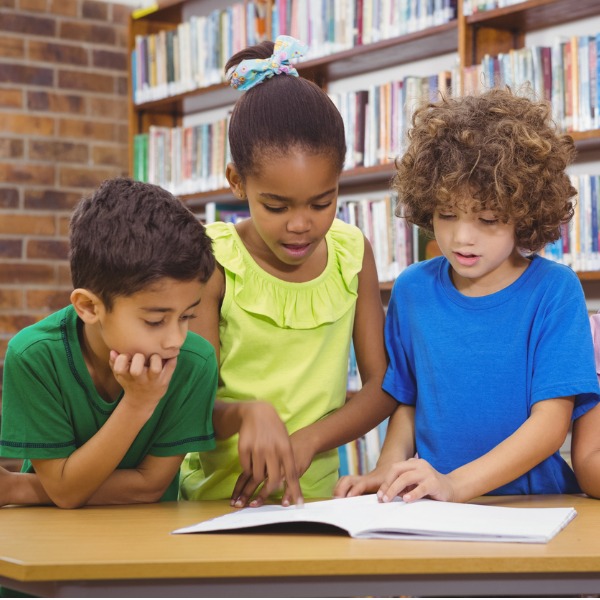
Analyzing involves organizing data and looking for patterns in the data that was collected during an Inquiry. This can include looking for repeated results, upward and downward trends, etc. Interpreting involves trying to explain the patterns that were discovered as well as trying to explain unusual points or discrepancies in the data.
Analyzing and interpreting data may not always occur in a simple, linear way. Sometimes additional data is needed, or the data needs to be recorded and displayed in a different way, in order for the patterns to be discovered. In the Planning stage, students considered the ways in which they would record the qualitative and quantitative data they would be collecting. In the Analyzing and Interpreting stage they find out if the ways they chose to record the data make the information easy to use, or if they need to rethink and revise their organization and recording methods for future inquiries.
When making conclusions based on the analysis and interpretation of data, students should give reasons for their conclusions that are based on logic, personal experience and the results of similar inquiries.
Connect

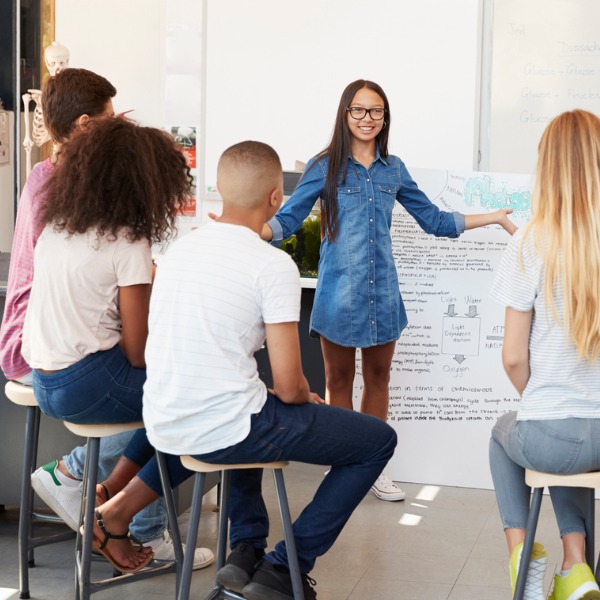
In the Connect stage of the Inquiry process, meaning is made of the Inquiry experience through making connections between prior knowledge and new knowledge and experiences. These connections can occur through individual reflection as well as through conversations with others.
Reflection is a process whereby students use critical thinking skills to look back on a learning experience in terms of things that went well and areas where there may be room for growth/change. Through conversations with peers and educators, students can compare their experiences and their findings and discuss why there were similarities and differences in the findings. Educators can provoke students thinking about who might be interested in the findings from the Inquiries and how what was learned might be useful in future learning.
Connecting should not be seen as the final stage in the Inquiry process. Throughout their Inquiries students may find that questions arise that can lead to further learning through Inquiry. Educators should provide opportunities for students to share these questions and to encourage students to use their questions to begin new Inquiries.
Misconceptions
- Inquiry is not a method of doing science, technology, engineering or math. Rather it is an approach where the natural curiosity of students is encouraged and enhanced.
- Inquiry is not a fixed, linear, recipe-card sequence of steps to follow. Rather it is a cyclical, flexible back and forth process that can be messy. Putting it down on paper helps educators plan intentionally and purposefully for student learning.
- Hands-on experiences do not necessarily mean Inquiry is happening. Inquiry is driven by students’ wonderings and questions and the opportunity to explore their wonderings through experimentation and investigations.
- Inquiry is for all students. It allows for multiple entry points for students regardless of their prior knowledge and experiences.
References
Reimer, J., & Watters, D. (2017) THINQ Kindergarten: Inquiry-Based Learning in the Kindergarten Classroom. Toronto: Wave Learning Solutions.
Colyer, J., & Watt, J. (2016) THINQ 4-6: Inquiry-Based Learning in the Junior Classroom. Toronto: Wave Learning Solutions.